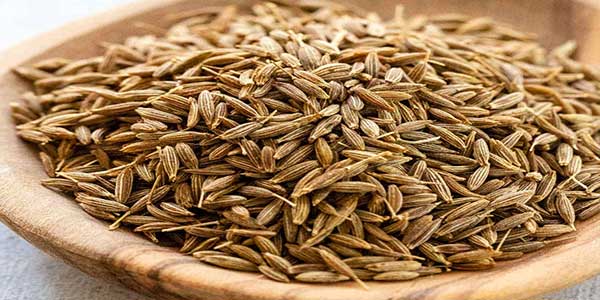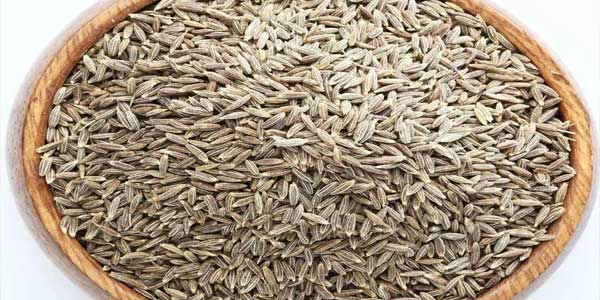Introduction:
Cumin seeds, also known as Jeera, are a popular spice widely used in various cuisines around the world. Known for their distinct aroma and warm, earthy flavor, cumin seeds are a staple in Indian, Middle Eastern, Mexican, and North African cuisines. In addition to their culinary uses, cumin seeds offer numerous health benefits and have been used for centuries in traditional medicine. In this comprehensive article, we will delve into the uses, qualities, origin, sources, production, applications, health benefits, culinary uses, how to use cumin seeds in cooking, and potential side effects associated with their consumption.
Origin and Sources of Cumin Seeds (Jeera):
Cumin seeds have a rich history and are believed to have originated in the Mediterranean region. They have been used in culinary and medicinal applications for thousands of years. Today, cumin seeds are cultivated in several countries, including India, Iran, Mexico, Turkey, and Egypt. These seeds can be found in most grocery stores, spice markets, and online sources as whole seeds or ground into powder.
Qualities of Cumin Seeds (Jeera):
Cumin seeds possess several qualities that make them a popular spice in cooking. Here are some notable qualities of cumin seeds:
a) Flavor Profile: Cumin seeds have a warm, earthy, and slightly nutty flavor with a hint of citrus. They offer a distinct taste that adds depth and complexity to dishes.
b) Aromatic: Cumin seeds have a strong and distinctive aroma, especially when toasted or ground. The aroma is released through cooking and enhances the overall sensory experience of a dish.
c) Versatility: Cumin seeds are versatile and can be used in both whole and ground forms. They complement a wide range of flavors and ingredients, making them a popular choice in various cuisines.
d) Nutritional Value: Cumin seeds are a good source of dietary fiber, vitamins, and minerals. They contain antioxidants and have antimicrobial properties. However, the nutritional content may vary depending on the quality and freshness of the seeds.

Production of Cumin Seeds (Jeera):
The production of cumin seeds involves several stages, from cultivation to processing. Here’s an overview of the production process:
a) Cultivation: Cumin plants thrive in hot and dry climates. They are typically grown from seeds in well-drained soil and require a sufficient amount of sunlight. It takes about 3-4 months for the plants to reach maturity.
b) Harvesting: Once the cumin plants mature, small white or pink flowers appear. These flowers turn into small seed pods that contain the cumin seeds. The plants are harvested when the seed pods have dried and turned brown.
c) Drying: After harvesting, the cumin plants are cut and laid out to dry in the sun. The drying process allows the seed pods to open naturally, releasing the cumin seeds. This step is crucial in ensuring the seeds’ flavor and aroma development.
d) Threshing and Cleaning: Once the cumin seeds are released from the dried seed pods, they are separated through threshing. This involves beating or rubbing the dried plants to loosen the seeds. The separated seeds are then cleaned to remove any debris or impurities.
e) Packaging: The cleaned cumin seeds are packaged and stored in airtight containers to maintain their freshness, flavor, and aroma. They are available in whole seed form or ground into powder.
Uses and Applications of Cumin Seeds (Jeera):
Cumin seeds have a wide range of uses in cooking and culinary applications. Let’s explore some of the primary uses:
a) Spice Blends: Cumin seeds are a key ingredient in many spice blends, such as garam masala, curry powder, and taco seasoning. These blends are used to enhance the flavor and aroma of various dishes.
b) Seasoning: Cumin seeds can be used as a standalone seasoning or as a part of the tempering process. They are often added to hot oil or ghee and allowed to sizzle and release their flavors before incorporating other ingredients.
c) Marinades and Rubs: Cumin seeds, either whole or ground, are commonly used in marinades and rubs for meat, poultry, and vegetables. They add a distinct flavor and help tenderize the ingredients.
d) Curry and Stew: Cumin seeds are a common ingredient in curries, stews, and soups. They contribute to the overall flavor profile and help create a rich and aromatic base.
e) Breads and Baked Goods: Cumin seeds can be sprinkled on top of bread, rolls, and baked goods to add a flavorful and decorative touch.

Health Benefits of Cumin Seeds (Jeera):
Cumin seeds offer several health benefits due to their nutritional composition and active compounds. Here are some notable health benefits associated with cumin seeds:
a) Digestive Aid: Cumin seeds have long been used as a digestive aid. They can help alleviate digestive discomfort, reduce bloating, and enhance digestion. Cumin seeds contain compounds that stimulate the secretion of digestive enzymes and improve nutrient absorption.
b) Anti-inflammatory Properties: Cumin seeds possess anti-inflammatory properties due to the presence of certain compounds. They may help reduce inflammation in the body, potentially benefiting individuals with conditions like arthritis or inflammatory bowel disease.
c) Antioxidant Activity: Cumin seeds are rich in antioxidants, which help neutralize harmful free radicals in the body. The antioxidants in cumin seeds have been associated with various health benefits, including reduced oxidative stress and a lower risk of chronic diseases.
d) Blood Sugar Regulation: Some studies suggest that cumin seeds may have a beneficial effect on blood sugar levels. They may help improve insulin sensitivity and regulate blood glucose levels, making them potentially beneficial for individuals with diabetes or those at risk of developing the condition.
e) Weight Management: Cumin seeds have been studied for their potential role in weight management. They may aid in weight loss by promoting satiety, reducing food cravings, and enhancing fat metabolism.
f) Respiratory Health: Cumin seeds have traditionally been used to relieve respiratory symptoms such as cough, congestion, and asthma. They may help loosen mucus, reduce inflammation in the airways, and promote respiratory health.
How to Use Cumin Seeds (Jeera) in Cooking:
Cumin seeds can be used in various ways in cooking to enhance the flavor and aroma of dishes. Here are some tips on how to use cumin seeds effectively:
a) Dry Roasting: Dry roast cumin seeds in a skillet over medium heat until they release their aroma and turn slightly darker in color. This toasting process intensifies their flavors and adds depth to the dishes.
b) Grinding: Whole cumin seeds can be ground into a fine powder using a spice grinder or mortar and pestle. Freshly ground cumin powder has a more potent flavor and aroma.
c) Tempering: Cumin seeds are often used in tempering or tadka to enhance the flavor of various dishes. Heat oil or ghee in a pan, add cumin seeds, and allow them to sizzle and release their flavors before adding other ingredients.
d) Garnish: Toasted cumin seeds can be used as a garnish for salads, soups, stews, and dips. They add a final touch of flavor and crunch to the dishes.
e) Spice Mixes: Create your own spice blends by combining cumin seeds with other spices like coriander seeds, fennel seeds, and cardamom pods. This allows you to customize the flavor profile according to your preference.

Side Effects and Precautions:
While cumin seeds are generally safe for consumption, it’s important to be aware of potential side effects and take necessary precautions:
a) Allergies: Some individuals may be allergic to cumin seeds or other spices. If you experience allergic reactions such as itching, hives, or difficulty breathing after consuming cumin seeds, discontinue their use and seek medical attention if necessary.
b) Medication Interactions: Cumin seeds may interact with certain medications, including anticoagulants (blood thinners), antidiabetic drugs, and medications metabolized by the liver. If you are taking any medications, consult with a healthcare professional before consuming large amounts of cumin seeds or using cumin supplements.
c) Pregnancy and Breastfeeding: Pregnant and breastfeeding women can generally consume cumin seeds as part of a balanced diet. However, it’s always recommended to consult with a healthcare professional for personalized advice.
d) Gastric Distress: In some individuals, consuming excessive amounts of cumin seeds may cause gastric distress, such as gas, bloating, or heartburn. It’s best to consume cumin seeds in moderation and monitor your body’s response.
Conclusion:
Cumin seeds, or Jeera, are a versatile and flavorful spice that adds depth and warmth to a wide range of dishes. Whether used as a standalone seasoning, in spice blends, or as part of tempering, cumin seeds contribute their unique taste and aroma to culinary creations. Alongside their culinary uses, cumin seeds offer numerous health benefits, including aiding digestion, reducing inflammation, regulating blood sugar levels, and promoting respiratory health.
By understanding the origin, sources, qualities, production methods, applications, health benefits, culinary uses, how to use cumin seeds in cooking, and potential side effects, you can confidently incorporate this versatile spice into your culinary repertoire. Enjoy the rich flavors and health benefits that cumin seeds bring to your favorite recipes.